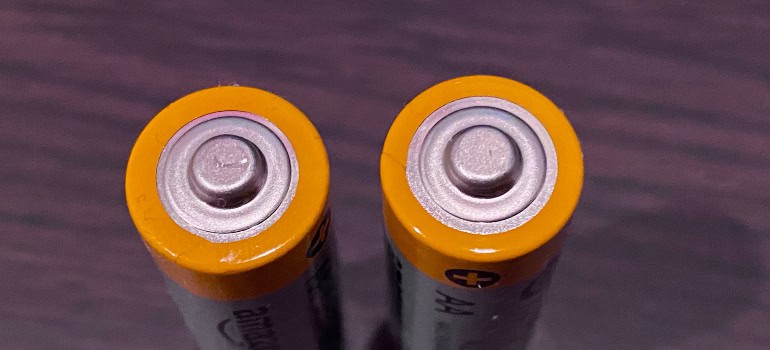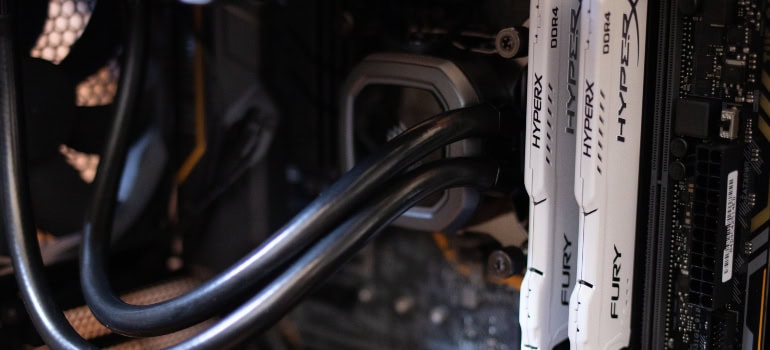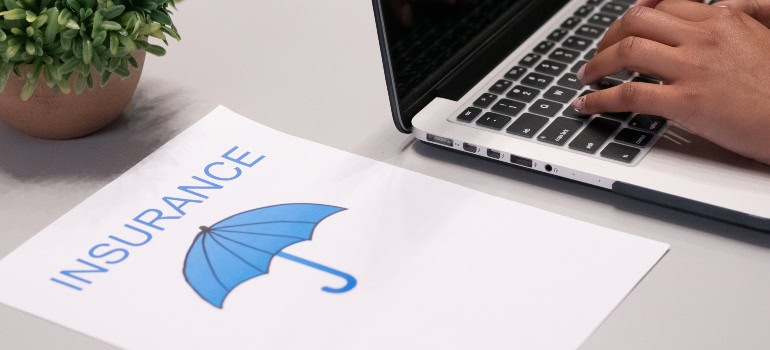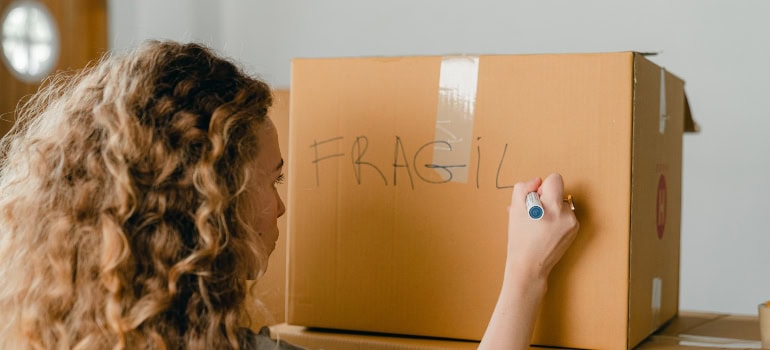In our digital age, electronics play an essential role in our lives. It can be a laptop that houses your professional life, a tablet that brings your favorite books to your fingertips, or a gaming console that offers a much-needed escape. These devices are indispensable. However, the intricate components that make these devices so useful can also make them quite vulnerable. Moreover, the transitions like moving homes or offices put their sturdiness to the test. Luckily, there’s a lot you can do when it comes to protecting electronics during your move. Here are some practical steps that will ensure your new-age devices reach their new location in optimal condition.
Remove your batteries
In the throes of a move, it’s crucial to pay attention to the details that safeguard your valuable electronics. One such detail is removing all batteries from each electronic device before initiating the wrapping and packing process. Why, you may ask? This simple yet effective step serves a dual purpose. Firstly, it helps prevent potential leakage that could cause irreversible damage to your devices. The corrosion from leaking batteries can wreak havoc on electronic internals, significantly reducing their lifespan. Secondly, it eliminates the risk of the item being inadvertently powered on. That could drain battery life or, worse, cause internal damage due to continuous operation.
This step is vital, irrespective of how long your electronics will be packed. It could be just for the few hours it may take to move across town. On the other hand, you may be doing a larger relocation assisted by professional services like long distance moving companies Northern VA offers. In any cas, removing batteries is non-negotiable.
But your responsibility doesn’t end with taking the batteries out. Proper care must also be taken when packing the batteries for transport. Store them separately from other items. A plastic bag or a small box would be ideal to prevent accidental contact. It’s also recommended to keep batteries at room temperature as exposure to high heat or freezing temperatures could lead to leakage or reduced performance. This careful handling of batteries may seem like unnecessary work, but it makes a big difference.

Snap a photo of your wired connections
Before you start packing larger electronics such as televisions and desktop computers, place colored stickers on cords connected to televisions, stereos, computers, and other electronic devices. Choose vividly colored stickers, and do not reuse the same color on two cords of the same device.
Also, take the time to snap a photo of the back and sides of them where you have wired connections. For example, take a photo of the panel on the back of your television where the different cables to your DVD player and other devices connect.
When you start unpacking your large electronics in your new home, simply refer to the photo you took of the connections. That way, you can easily see which cable goes into which slot. Otherwise, you may end up with a lot of time-consuming trial-and-error experimentation to get the connections right again.

Follow the manufacturer’s advice
Keep the product manuals for all your electronics. They were created and included with your electronics for good reason. Often, they will give you specific instructions for the best way to pack the items. If the manufacturer recommends that a product be kept in a temperature-controlled environment, you may want to keep it with you during a move.
Not all product manuals come with storage instructions. In that case, you can contact the manufacturer with any questions you have about keeping your electronic item safe during packing. If you plan to store electronics for any certain amount of time before moving to your new home, find out whether they need to be in a climate-controlled environment.
Protecting electronics during your move includes keeping them away from extreme temperatures
Electronics are sensitive to extreme temperatures, which can harm their internal components. Whether you’re moving in the sweltering summer or chilly winter, it’s crucial to protect your devices from temperature extremes. Aim to keep your electronics in a temperature-controlled environment. Also, avoid leaving them in a vehicle for prolonged periods. If you’re using professional movers, communicate the temperature sensitivity of your electronics. For storage, opt for facilities with climate control. Being mindful of the temperature gives you a good chance to safeguard the functionality and longevity of your electronics during a move.

Use bubble pack and packing peanuts
Protecting electronics during your move necessitates strategic packing. A reliable method involves both bubble packs and packing peanuts. Wrap each item in a bubble pack to absorb shocks and prevent physical damage. Next, nestle your bubble-packed electronics in a box with packing peanuts. They fill gaps, provide additional padding, and importantly, absorb humidity, reducing moisture-related damage.
Regardless of whether you’re moving by yourself or employing a professional delivery service Northern Virginia residents trust, this technique ensures your electronics reach their new destination in excellent condition.
After the move is over, don’t forget about sustainability. While efficient, packing peanuts and bubble packs can lead to waste. Therefore, consider reusing these materials or recycling them. In doing so, you’re not just protecting your electronics, but also contributing to environmental conservation. A successful move blends efficiency, safety, and sustainability.

Consider a value assessment and insurance for your electronics
Navigating the complexities of moving, you should factor in the financial aspect. This is especially relevant when dealing with valuable items like electronics. It necessitates a thorough inventory and value assessment of all your electronic devices. Creating a detailed list not only helps keep track of your possessions but also serves as a critical tool for assessing the total value of your electronic assets. It’s a good practice to include model numbers, and purchase dates, and even take pictures of your devices.
Moreover, considering insurance becomes vital. Although you may have hired some of the professional movers DC area is home to, mishaps can still occur during the moving process. Many moving companies offer valuation coverage, but it may not fully cover the cost of high-value items like electronics. You might want to consider purchasing additional insurance to cover any potential damage or loss during transit. This way, you can rest easy, knowing that your valuable electronics are financially protected. With that worry out of your mind, you can focus on settling into your new home or office.

Use packing tape to seal boxes for protecting electronics during your move
Make sure that all boxes are sealed fully with packing tape at the openings. Do this at both the top and bottom of your boxes. That will help keep our moisture to best protect your devices. It also ensures that the boxes do not come open, which would risk valuable items becoming damaged or destroyed in a fall.
Contact a reputable moving company such as Fairfax Transfer & Storage for a guaranteed quote is a good idea. The professionals are always the best choice when it comes to protecting electronics during your move. They often offer packing services so you don’t have to worry about details like this one. Bear in mind that the experienced movers are happy to answer any questions you may have.
Mark the boxes with your electronics as fragile
Preserving the integrity of your electronics during a move involves careful packing and clear communication. Given their fragility due to intricate internal components, electronics need to be handled gently. Thus, marking each box that holds electronics as ‘fragile’ becomes a must.
This visual cue informs anyone handling the boxes, whether they are friends, family, or professional movers such as local movers VA provides, that extra care is needed. Even with diligent packing, improper handling can still lead to damage.
In addition to marking the boxes, it’s essential to verbally inform all involved about the presence of electronics. Don’t assume the ‘fragile’ marking is enough. Explicit information prevents mishandling.
After all, the safety of your electronics is a shared responsibility. Effective packing, correct labeling, and open communication with your movers are all necessary for a damage-free move.

Unpacking & setting up your devices post-move
Setting up your electronics at the new location and conducting post-move checks is a final step in your moving process. To streamline this, follow a systematic approach:
- Unpacking order: Start by unpacking larger electronics first, like TVs or desktop computers. They usually require a dedicated space and setup.
- Cable management: As you unpack, keep track of various cables and accessories. It’s easy to misplace these smaller components amidst the chaos of a move.
- Inspect for damage: Carefully inspect each device for any physical damage like scratches, cracks, or dents. Don’t forget to check the power cords and plugs as well.
- Test functionality: After setting up, turn on your electronics to ensure they’re functioning properly. Look out for any unusual noises, flickering screens, or system errors.
- Keep documentation: Should you find any damage, document it immediately. Photos, detailed descriptions, and any noted performance issues will be invaluable if you need to file an insurance claim.
With the help of this checklist, you can ensure a smooth transition for your electronics, making your new space ready for work or leisure in no time.
Securing your digital belongings during the relocation
Protecting electronics during your move is not as daunting as it might initially seem. With the right planning, preparation, and packaging materials, you can easily protect your valuable devices from potential harm. Study these guidelines and you’ll ensure that your electronics are just as ready as you are to settle into your new home or office. After all, these devices are not just ‘things’. They are rather expensive extensions of our lives and work. In essence, preserving them protects our continuity in a digitally driven world.


